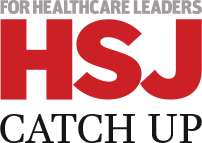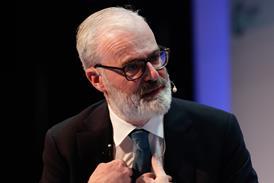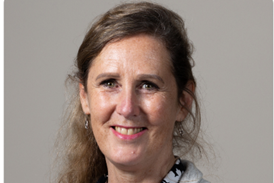Joined up care must include pharmacists to be effective − and that means more than just using an electronic prescription service, says Dr Shaun O’Hanlon

Pharmacists typically work on their own systems, which are different from those used by GPs, community teams and hospitals, and not designed with interoperability in mind
In the drive for integrated pathways that deliver seamless patient care and efficiencies for CCGs, one important healthcare profession remains on the periphery − the pharmacist.
‘Pharmacists are perfectly placed to deliver a wide range of services beyond dispensing medication’
The nation’s 80,000 community pharmacists are often the first point of contact for patients before they visit the GP. Yet despite being highly trained and skilled − and prominently located in the heart of their communities − they are not being used to their full potential by the NHS.
The profession is perfectly placed to deliver a wide range of services beyond dispensing medication, from encouraging patients’ compliance to checking dosages and offering advice on side effects and interactions.
Technology barriers
While efforts have been made to extend pharmacy’s role, to date technology has been a barrier to achieving full integration with the wider healthcare team.
Pharmacists typically work on their own systems, which are different from those used by GPs, community teams and hospitals, and are not designed with interoperability in mind. However, things are beginning to change.
A significant national development is the rollout of “release two” of the electronic prescription service, under which EPS-enabled IT systems used in GP surgeries and community pharmacies can exchange electronic information via the Spine database.
There are many benefits: quicker and easier prescribing for the GP, who can authorise individual or multiple prescriptions with an electronic signature; more accurate information exchange through standardised communication; and improved convenience for patients, who can have their prescriptions sent directly to a dispenser of their choice.
Although slow to take off, the programme is gaining momentum. Latest statistics from the Health and Social Care Information Centre show that 791 GP practices and 9,831 pharmacies now use electronic prescribing. More than 5.7 million prescriptions have been sent electronically already.
The real prize
But electronic prescriptions are just the tip of the iceberg. The real prize is further integration of GP and pharmacy software systems to enable the two professions to work more closely together in the care of patients − particularly those with complex, long term health problems whose medication regimes need careful management.
The good news is that integrated projects are already being piloted with promising results.
Integration in east London
In Plaistow, east London, the Rohpharm community pharmacy is piloting a new service that enables direct electronic communication between its system and that used by two neighbouring GP practices. Unlike EPS, communication is direct, not via the Spine, which opens up greater possibilities.
To date, all parties have seen proven benefits − including clearer communication, more informed patient care and even reduced drugs waste.
Pharmacist Jignesh Patel says: “We can now see the full list of the patient’s repeat medication that is held on the GP system, which makes it easier for us to respond to patient requests.
“We can also communicate directly with the GP; for example, to query a prescription. The GP can also contact us, such as to ask us to only fill part of a script because the patient is overdue a review.”
One of the GPs involved, Dr Barry Sullman, says: “Linking GP and pharmacy systems is worth its weight in gold in terms of accuracy of prescriptions and time, and cost savings of many hundreds of pounds.
“It’s much more efficient. There is no wastage and no wrong or missing items because a highly qualified pharmacist is completing the repeat prescription request rather than administration staff.”
East London is the first pilot in an initiative between two leading software providers that has the ultimate aim of delivering end to end integration of GP and pharmacy systems.
The future possibilities go far beyond the exchange of basic information around repeat prescriptions. GPs could see which prescriptions have actually been dispensed, allowing them to monitor compliance in consultation with pharmacists.
Commissioning joined up care
In a further development, pharmacists could be given access to elements of the patient’s GP record, with the patient’s consent. This would enable the profession to play the fullest possible role in patient care − giving CCGs new options for creating efficient patient pathways.
‘In an NHS that is struggling to balance the books, it makes sense to maximise the skills of the UK’s highly trained community pharmacists’
For example, access to patient data could enable pharmacists to carry out more effective medicine reviews and to integrate these into care pathways for minor ailments − helping to reduce the 57 million GP consultations a year in this area.
For patients on drugs with a narrow therapeutic ratio, such as warfarin, pharmacists could be involved in monitoring and adjusting doses. Here, they could undertake INR blood clotting tests to check the dose is correct and feed the information back electronically to the doctor, providing safe, coordinated care.
Better care out of hours
There are also opportunities to improve out of hours care. For example, a patient with back pain at the weekend could avoid an out of hours or accident and emergency presentation by calling at the pharmacy for an effective over the counter painkiller, secure in the knowledge that the pharmacist was able to check their medical record to see if any other prescribed drugs might interact with it.
Integrating pharmacy also has the potential to improve the care of patients discharged from hospital into nursing homes, which is becoming more common.
These patients frequently leave with a package of drugs dispensed by the hospital pharmacy. That prescription eventually needs renewing − and if it happens to run out at the weekend, the local out of hours GP and community pharmacy are often working in an information vacuum, with no access to discharge information.
‘The technology already exists to enable integrated working − it is now for CCGs to recognise and seize the opportunity’
Involving the community pharmacist in the electronic discharge pathway through integrated technology would ensure a safer dispensing platform and better care for this vulnerable and growing group of patients.
In an NHS that is struggling to balance the books while coping with growing demand, it makes sense to maximise the skills of the UK’s highly trained community pharmacists.
The technology already exists to enable integrated working − it is now for clinical commissioning groups to recognise and seize the opportunity.
Dr Shaun O’Hanlon is clinical and development director at EMIS



























No comments yet